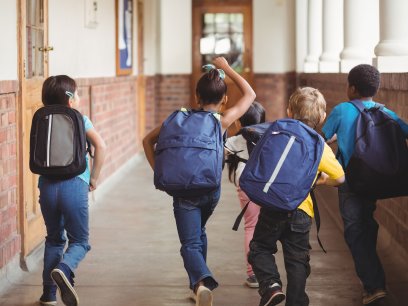
A widely cited New England Journal of Medicine review warned that climate change and air pollution pose wide-ranging threats to children’s health. It found that nearly every child worldwide faces risks from even mild climate-related hazards.
Children are especially vulnerable because they spend more time outdoors, their bodies process exposures differently, and they rely on caregivers for protection. Infants and young children also breathe more air relative to their body weight, which increases their exposure to pollutants.
Protecting kids starts with awareness. By understanding and preparing for climate and weather-related risks, families can take steps to safeguard children’s health.
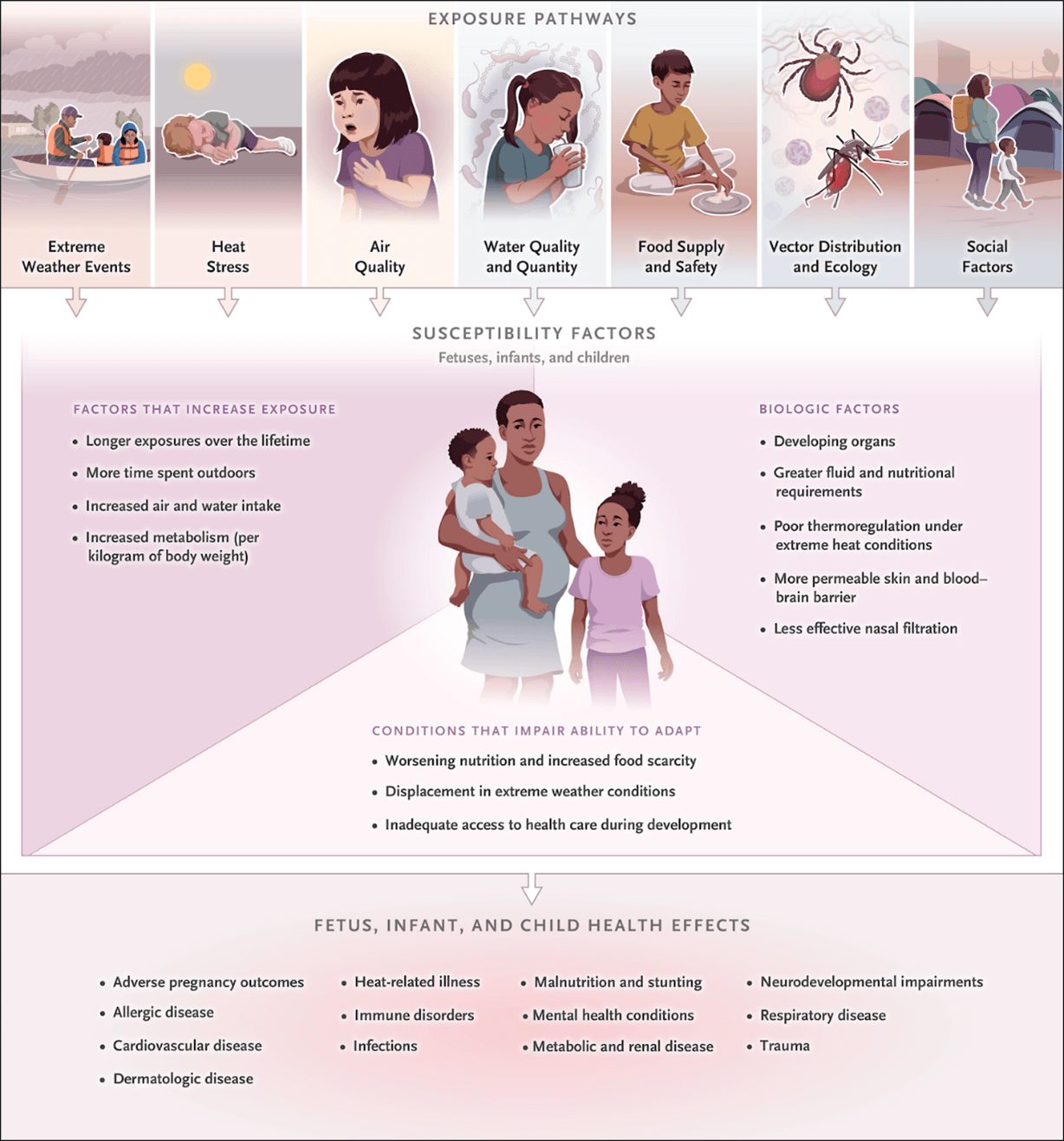
From The New England Journal of Medicine, Frederica Perera, Dr.P.H., Ph.D., and Kari Nadeau, M.D., Ph.D., Climate Change, Fossil-Fuel Pollution, and Children’s Health, Copyright © 2022 Massachusetts Medical Society. Reprinted with permission from Massachusetts Medical Society.
Allergies and Asthma
A warming climate has led to earlier springs and longer growing seasons for many plants. These changes have increased the length and intensity of the pollen season in some parts of the United States, which can increase allergy and asthma episodes.
Warmer temperatures also promote the production of more ground-level ozone, which is a known trigger for asthma attacks in some children. While asthma may be associated with genetic factors, environmental triggers for asthma such as increased air pollution are also contributing factors to the development of the disease. The World Health Organization estimates that more than one billion children globally are exposed to “very high levels” of air pollution, defined as exceeding 25µg/m3.
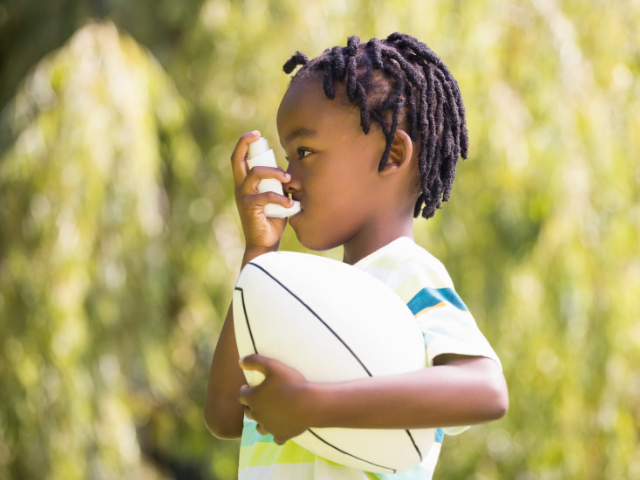
What you can do:
- Know your child’s asthma triggers.
- Check the air quality forecast. If air quality is poor and your child has been diagnosed with asthma, consider rescheduling sports and other outdoor activities for another day.
- If you do go outside, aim for early morning or evening hours, when air pollution levels and pollen levels are likely to be lower.
- Consider starting your child’s medications a few weeks before allergy season begins to help manage their symptoms.
Extreme Heat
The number of extreme heat events in the United States continues to rise and climate projections indicate that these events will be more frequent and intense in coming decades. Children do not adapt to heat as efficiently as adults, and often rely on adults to help them stay cool and hydrated during hot weather. Studies also suggest that heat associated with climate change has adverse effects on the mental health of children and adolescents and also affects their ability to learn.
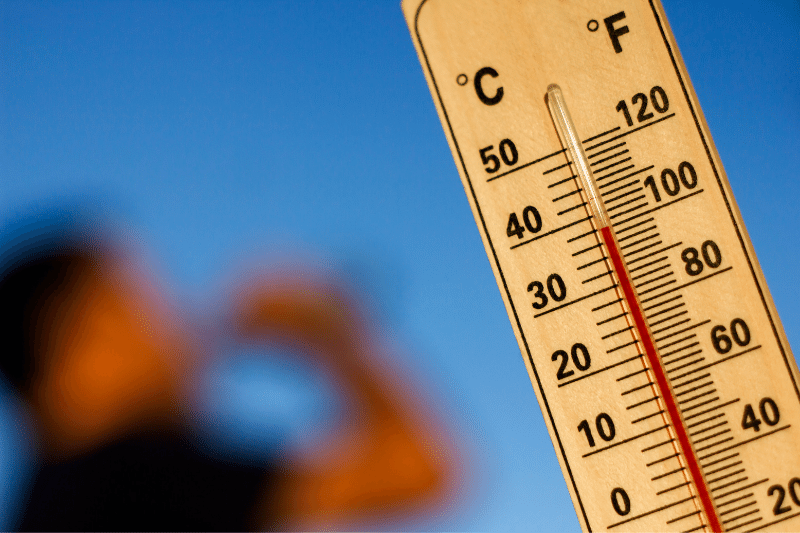
What you can do:
- Help children stay hydrated, stay cool, and dress for the weather.
- Learn more about preventing heat-related illness from the Centers for Disease Control.
Extreme Weather Events
Climate change has intensified certain extreme weather events like floods and hurricanes. In the United States, approximately 1.7 million people—many of them children—were displaced from their homes in 2020 as a result of natural disasters. In addition to the immediate threats of drowning and physical injury, these events can lead to long-term effects such as the disruption of education and post-traumatic stress disorder.
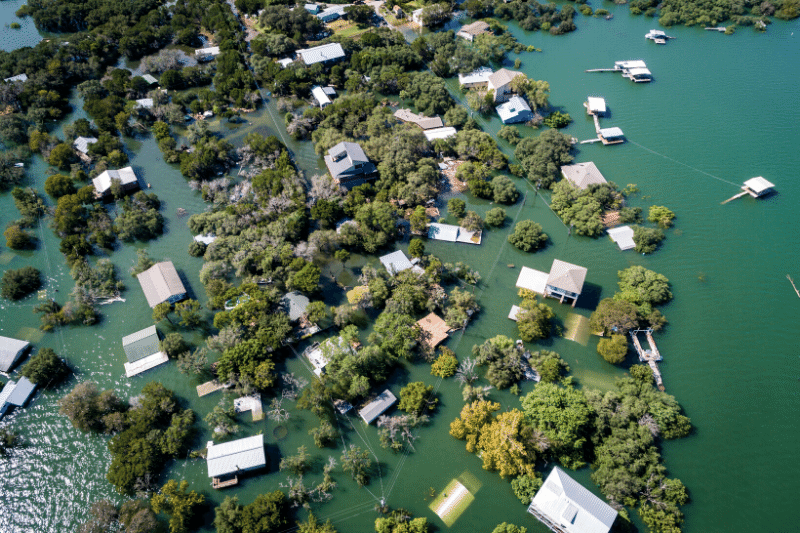
What you can do:
- Have a safety plan in place for extreme weather where you live.
- Put together a safety kit, which might include extra clothing, water, important documents, and a NOAA Weather Radio.
- Know where your nearest shelter is or if there is an evacuation route nearby.
- Review NEEF’s Extreme Weather 101 course to learn the basics about extreme weather and climate change.
Wildfire Smoke
Climate change has fueled a dramatic increase in wildfires in the West. In 2021, more than seven million acres of land were burned in wildland fires, and the smoke from these types of incidents can travel—and bring their negative health impacts—across thousands of miles. Scientists are still learning about the health impacts of prolonged exposure to wildfire smoke. Children can suffer from asthma complications, pneumonia, and bronchitis, and research has shown increased emergency room visits and hospital admissions for children both during and after a wildfire. Exposure to wildfire smoke in utero has also been linked to low birth weight and preterm births.
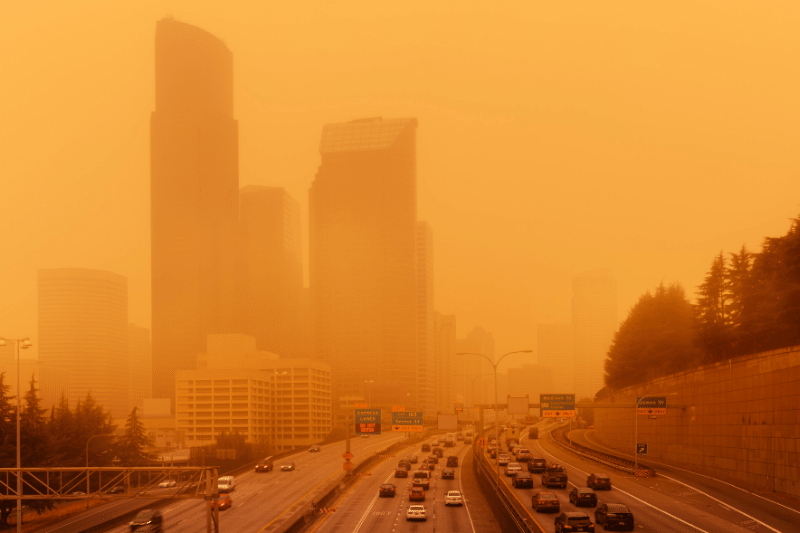
What you can do:
- Visit AirNow.gov for real-time local air quality updates and email alerts for your ZIP code.
- Reduce your child’s exposure to smoky conditions by avoiding physical activity outside when wildfires are nearby.
- Consider purchasing a portable air cleaner or high-efficiency HVAC system filter to improve indoor air quality. Choose one that fits your room size and ensure that it does not produce ozone.
- Keep your child’s inhaler and other quick-relief asthma medicine with you.
Insect-borne Diseases
The most common insect-borne diseases are spread by fleas, ticks, and mosquitoes. These diseases include Lyme disease, Dengue fever, West Nile virus, and Rocky Mountain spotted fever. As the climate becomes warmer, these insects are able to expand their ranges, potentially exposing more people to infection. Children are more susceptible to insect bites because they generally spend more time outdoors than adults and are dependent upon adults to take preventative measures.
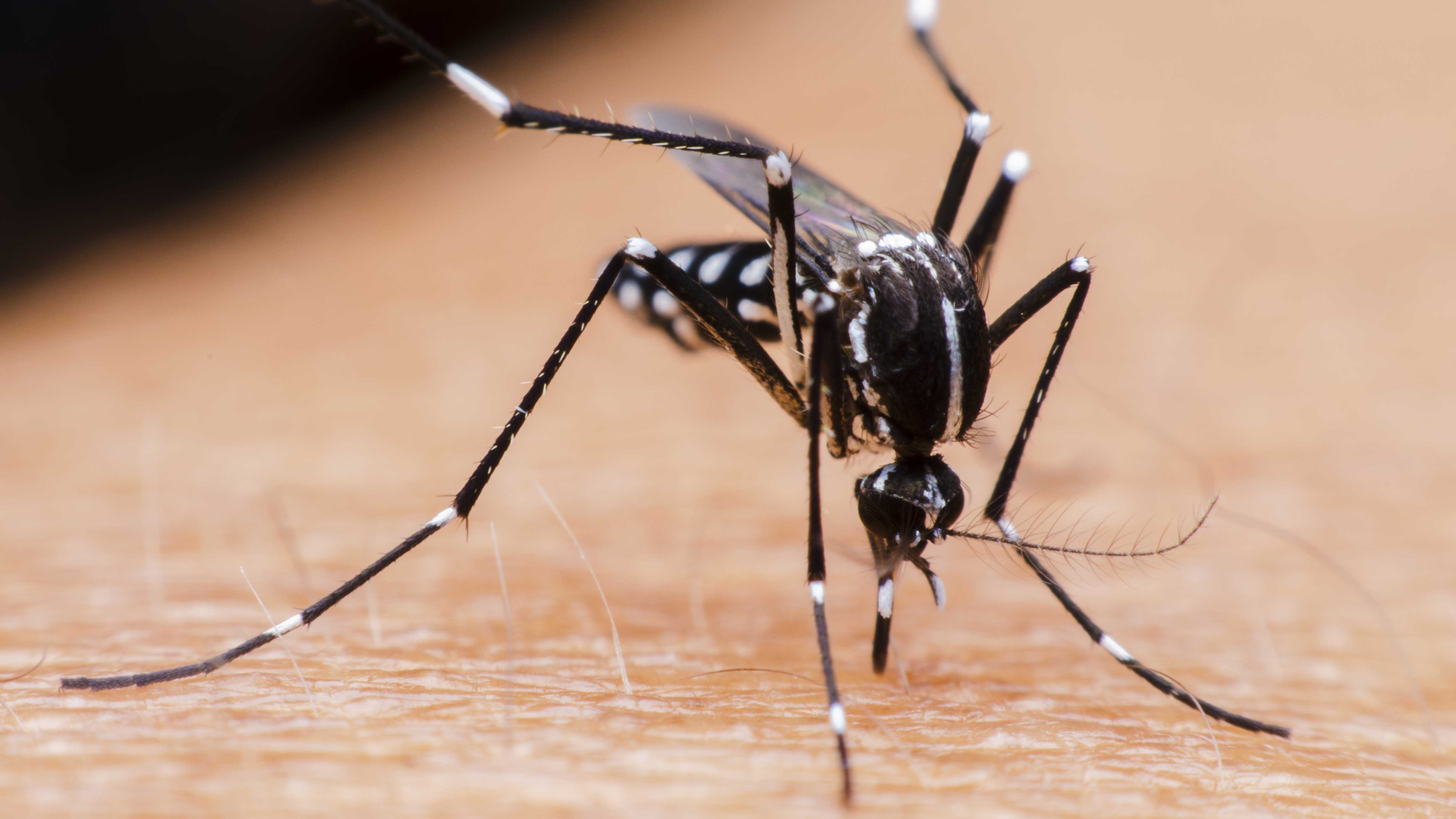
What you can do:
- Cover up exposed skin when spending time outside.
- Use insect repellents to prevent bites.
- Read these tips for using insect repellents safely and effectively from the US Environmental Protection Agency.
Learn More About Children’s Environmental Health
It is important for all of us to understand how climate change can impact the health of our families. To call greater attention to the issue, the New England Journal of Medicine group of journals plans to publish at least one article per month related to fossil fuel–driven health impacts.
It is also important to understand that people are impacted by climate change in different ways. All children are at risk from air pollution and climate change, but there are disparities. In the US, children in economically disadvantaged and certain racial and ethnic groups, such as Black and Hispanic children, are disproportionately impacted by the effects of climate change.
For Healthcare Professionals
Healthcare professionals play a key role in helping families minimize environmental health risks. NEEF offers a suite of resources to support clinicians in addressing these challenges, including best practices for engaging populations disproportionately impacted by environmental hazards. Key resources for health professionals include:
- Pediatric Asthma Resources: Free online course with CDC’s EXHALE strategies, Environmental Management of Pediatric Asthma guidelines, patient handouts, and Environmental History Forms to screen for and manage environmental asthma triggers.
- Nature Champion Online Course: Builds capacity for healthcare providers and mental health professionals to prescribe nature and connect children and families with outdoor experiences for well-being.
These tools equip healthcare professionals to protect children’s physical and mental health while addressing environmental factors.
For Families and Caretakers
NEEF has partnered with Hip Hop Public Health (HHPH), the globally award-winning nonprofit co-founded by renowned neurologist, Dr. Olajide Williams and hip hop icon Doug E. Fresh, on a dynamic multimedia collection aimed at tackling pediatric asthma called the EMPOWER Project. Comprised of eight original songs and animated videos, EMPOWER inspires young people with asthma to take charge of their health with evidence-based, self-management skills.
You can learn more about EMPOWER on our website, and watch all eight videos by visiting the HHPH Learning Studio.
For Educators
Environmental changes can be stressful for children, causing worry, anxiety, or fear about extreme weather and other impacts. Educators can play a key role in helping students process these feelings and build resilience.
What you can do:
- Talk about it: Create a safe space for students to share feelings using age-appropriate language.
- Use the Climate Emotions Toolkit: Access activities, discussion prompts, and strategies for managing climate-related emotions.
- Focus on steps students can take, like local projects or reducing waste.
- Teach coping skills: Mindfulness, journaling, and relaxation exercises help students manage anxiety.
These strategies help children engage with environmental challenges while supporting emotional well-being and confidence.
